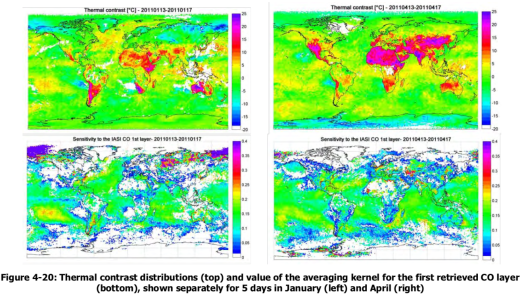SIROCCO - Synergetic SWIR and IR retrievals of near-surface concentrations of CH4 and CO for Earth and Planetary atmospheres

The SIROCCO study was performed under ESA guidance by a consortium led by NOVELTIS and including four partners: ULB (Belgium), IASB-BIRA (Belgium), SRON (Netherlands) and IAPS (Italy). The goal of the study was to review in a multidisciplinary context (Earth Observation and Planetary Science) the status of existing retrieval algorithms and to extend their capabilities when applied to remote sensing data collected (or to be collected in the near future) by instruments in orbit around the planets Earth and Mars, with atmospheric carbon monoxide (CO) and methane (CH4) as specific targets. A special focus was placed on deriving the near-surface concentrations of these two species (i.e. getting information on the atmospheric region called the planetary boundary layer or PBL). This specific objective is related to the detection and quantification of CO and CH4 sources which are located at the surface, but which impact (through atmospheric transport and photochemical processes) the composition of the global atmosphere of these two sister planets of our solar system.
In a first task, the existing requirements, algorithms and data sets related to the retrieval of CO and CH4 in the atmospheres of the two planets have been reviewed. In a second task, specific algorithms have been selected as effectively running on the premises of the 4 academic institutes participating in the study. The satellite data sets (Level 1 or L1 products i.e. spectra) available for testing the retrieval algorithms have been identified and collected (in some cases with a pre-processing as the spectral calibration of GOSAT spectra performed by NOVELTIS). The correlative measurements (other satellites, aircraft and ground-based stations) appropriate for validating the retrieved concentrations (Level 2 or L2 products) have also been chosen and collected. The third task was devoted to real retrievals and comparison exercises and have been separated by planet (Earth and Mars) and by type of retrieval (stand alone or non-synergistic and synergistic). Indeed for getting the best information on the full atmospheric profile of the target species (including their concentration in the PBL) it is expected that the combination (at the input of the inversion process) of L1 information originating from different sensors could be more efficient to generate reliable L2 products, than the separate generation of L2 products (total column, partial columns or sub-columns, profiles) with their strength and weaknesses. For example total column derived from nadir viewing instruments in the solar reflected shortwave infrared (SWIR) spectral region can be relatively precise since the light path through atmosphere is reaching the surface, but they do not provide vertical profile information. Conversely nadir viewing instruments operating in the thermal infrared regions have a sensitivity to the vertical distribution of the species because of the dependence of the received signal to the temperature profile, but their sensitivity is reduced in the PBL when the thermal contrast is low (i.e. when the surface temperature is equal to the temperature of the first atmospheric layer). Many of the possible spectral L1/L1 or L1/L2 synergies have been studied: L1(TIR,GOSAT)/L1(SWIR,GOSAT) or L1(TIR,IASI-NG)/L1(SWIR,S5) for Earth, L1(TIR,PFS)/L2(TIR T(z),PFS) or L1(SWIR,NOMAD)/L1(SWIR,ACS) for Mars. Remaining difficulties have been identified for CH4 (with recommendations to solve them), but promising results have been obtained both for CO and CH4 and for both planets benefiting from cross-fertilisation.
